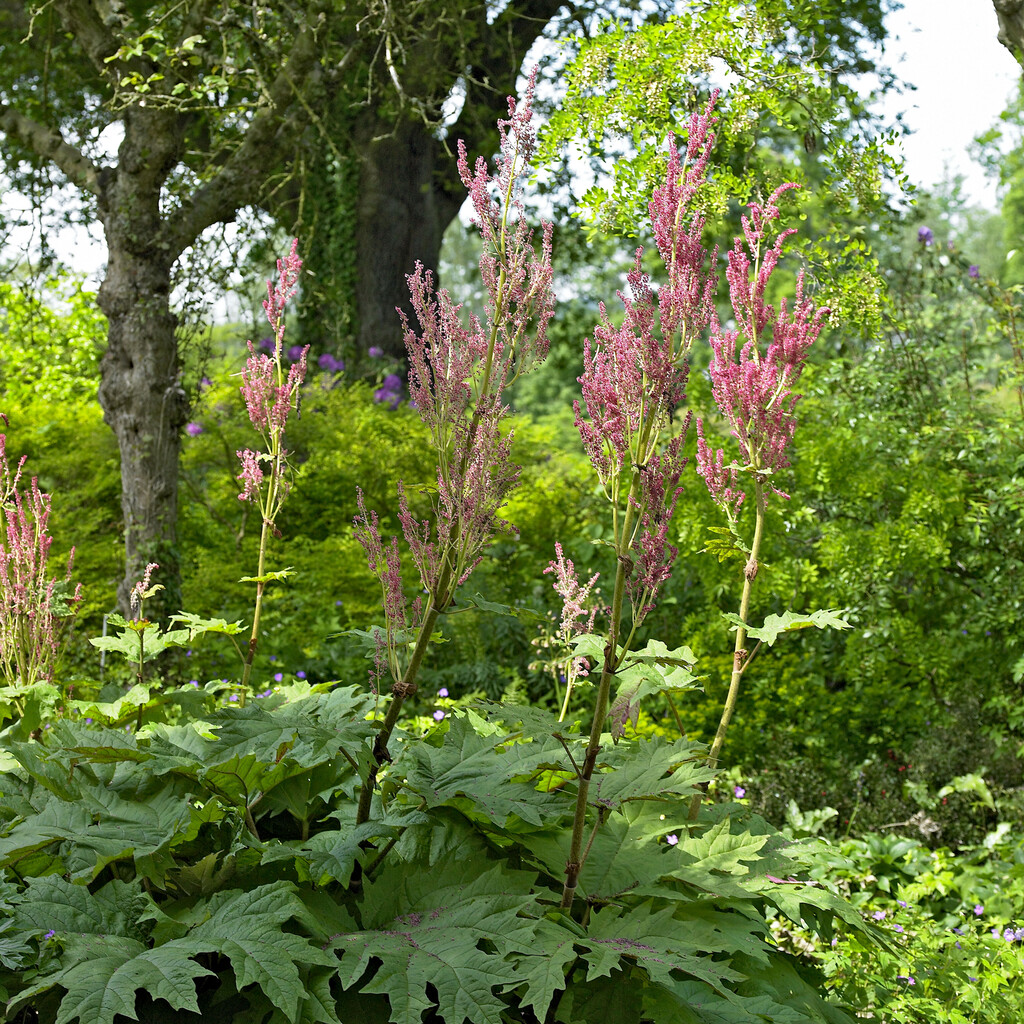Rheum palmatum var. tanguticum
A rhizomatous perennial to 2m high, with large basal leaves that emerge from the ground in late spring. Leaves are jagged and deeply cut, and dark reddish-purple when young, maturing to deep green with red undersides and long, thick reddish stems. In summer, tall, branching flower stems bear upright clusters of tiny, densely packed flowers in shades of white, pink or deep red
Size
Ultimate height
1.5–2.5 metresTime to ultimate height
2–5 yearsUltimate spread
1.5–2.5 metresGrowing conditions
Moisture
Moist but well–drainedpH
Acid, NeutralColour & scent
| Stem | Flower | Foliage | Fruit | |
| Spring | Green Red Purple | |||
|---|---|---|---|---|
| Summer | Cream Pink Red | Green Red | ||
| Autumn | Green Red | |||
| Winter |
Position
- Full sun
- Partial shade
Aspect
East–facing or South–facing or West–facing
Exposure
Exposed or Sheltered Hardiness
H6Botanical details
- Family
- Polygonaceae
- Native to GB / Ireland
- No
- Foliage
- Deciduous
- Habit
- Clump forming
- Potentially harmful
- Harmful if eaten. Wear gloves and other protective equipment when handling Pets: Harmful if eaten - for further information and contact numbers regarding pets, see the HTA guide to potentially harmful plants
- Genus
Rheum are robust rhizomatous herbaceous perennials with large, simple or palmately lobed leaves and tall leafy stems bearing large panicles of tiny flowers
- Name status
Correct
- Plant range
- China
How to grow
Cultivation
Grow in deep, moist, fertile soil, ideally in a sunny position. Mulch with organic matter in early spring. While slightly smaller than the species, this variety still needs plenty of space
Propagation
Propagate by division in early spring
Suggested planting locations and garden types
- Architectural
- Cottage and informal garden
- Flower borders and beds
Pruning
Deadhead spent flower spikes, cut back faded leaves at the end of the season
Pests
May be susceptible to slugs and blackfly (black aphid)
Diseases
May be susceptible to crown rot, honey fungus and virus diseases
Get involved
The Royal Horticultural Society is the UK’s leading gardening charity. We aim to enrich everyone’s life through plants, and make the UK a greener and more beautiful place.
